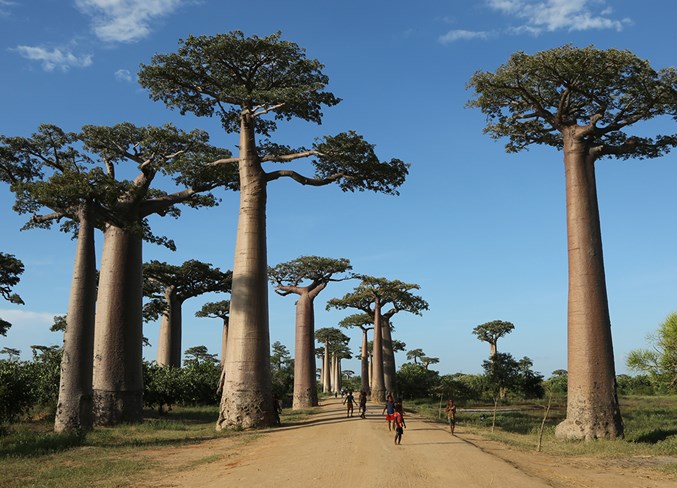MADAGASCAR - What did I know about Madagascar? Not much. Yes, I had seen those hilarious movies with unique animals romping across the screen. Like lemurs with round popped-out eyes and ears much too large for their small faces.
I had heard of Africa’s "Tree of Life." I’d seen photos of these giants that looked like elongated bottles and appeared to be topped with a mesh of roots. I was curious. An area in western Madagascar apparently had a "baobab alley," a place where these unusual trees, said to possess magical powers, stood like sentinels on either side of a dirt road. This I had to see.
So, on March 13 my brother Eric and I landed in Antananarivo, the capital of Madagascar. Nolavy, our guide, and Serge, his driver, met us at the airport and loaded the backpacks and cameras into the Hyundai Terracan. We changed money into local ariaries, and began our tour.
Imagine life 100 years ago and you get an idea of what it is like to travel over 700 kilometres to Morondava on the west coast. It’s where we’ll find the baobabs. Oxen, called "zebu," pull wooden wheeled carts topped with vegetables or sacks of charcoal.
Proud owners perch on the loads, as people line the roads, carrying bags, bundles of twigs or water buckets on their heads.
An overnight stay in Antsiribe, gateway to the highlands, is necessary for safety reasons. Main highways are narrow and winding. There are no shoulders. Nights are inky black and electricity is rare. Except for bus caravans, nobody drives during the night.
The next morning we’re on the road early. Lush green rice paddies shimmer in the morning sun. Ravines of red soil scar the gashed hills. Trees have been harvested for firewood.
The air is getting hotter as we descend from the highlands. The landscape has been burned flat so the first baobabs we see stand out like giants. Then there are more of them. We turn onto a rutted dirt road, which winds through a village made of mud and wattle huts. Women, hips gracefully swaying, balance stacks of gnarled wood on their heads.
Then ahead we see the baobab alley. Tall, stately trees flank both sides of the road. They’re all about 30 metres high. It’s like nothing we’ve ever seen before.
It’s eerily quiet except for frogs croaking in nearby fields. We’re in a sacred spot but people are just going about their everyday lives. There’s no admissions booth or any other tourist services.
We set up our tripods, ready to photograph the trees. Then a trio of little boys approach us. They are clutching faded pieces of blanket around their shoulders, armed against the approaching night. They poke sticks towards us on which bug-eyed chameleons perch. “Take picture,” the boys plead. They’re used to getting a few ariaries from tourists like us, who’ve travelled halfway around the world just to see the baobabs.
The African sun hovers like a golden disc and then sets behind the baobabs. We drive a few kilometres to Morondava for the night, knowing we’ll be back here at sunrise.
It’s brighter now than last night, so I look for offerings at the base of the trees. Many Malagasy believe the souls of their ancestors live in the baobab trees. I find no honey or rum offerings. But I do discover these enormous trees are a gift of life. Their smooth trunks are swollen with water. Many have survived droughts because of the baobabs.
Originally growing in dense forests, today the trees stand alone on cleared land. Susceptible to the elements, the trees are hit by cyclones and lightning strikes every year. Rice paddies make the ground soggy and this is not good for the baobab roots.
We so want to stay in this mysterious place, home of Madagascar’s national symbol, the baobabs. But the trip back to the airport is a long one.
In Antanarivo, traffic is snarled. Nolavy bumps us along side roads and lanes and we arrive at the airport with minutes to spare. Eric and I wave goodbye. We don’t want to leave the magic of Madagascar but the Seychelle Islands are waiting. Another adventure.



